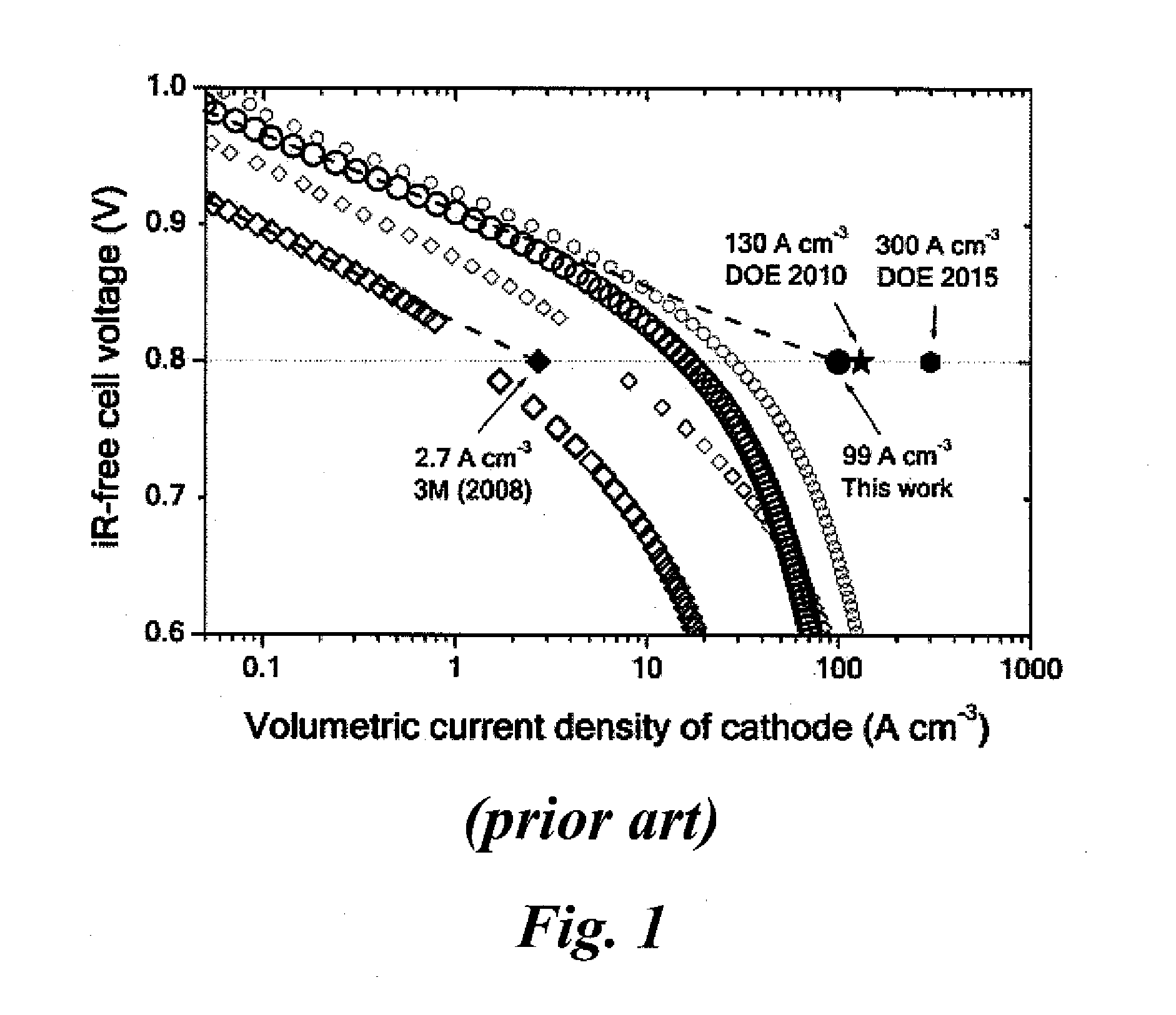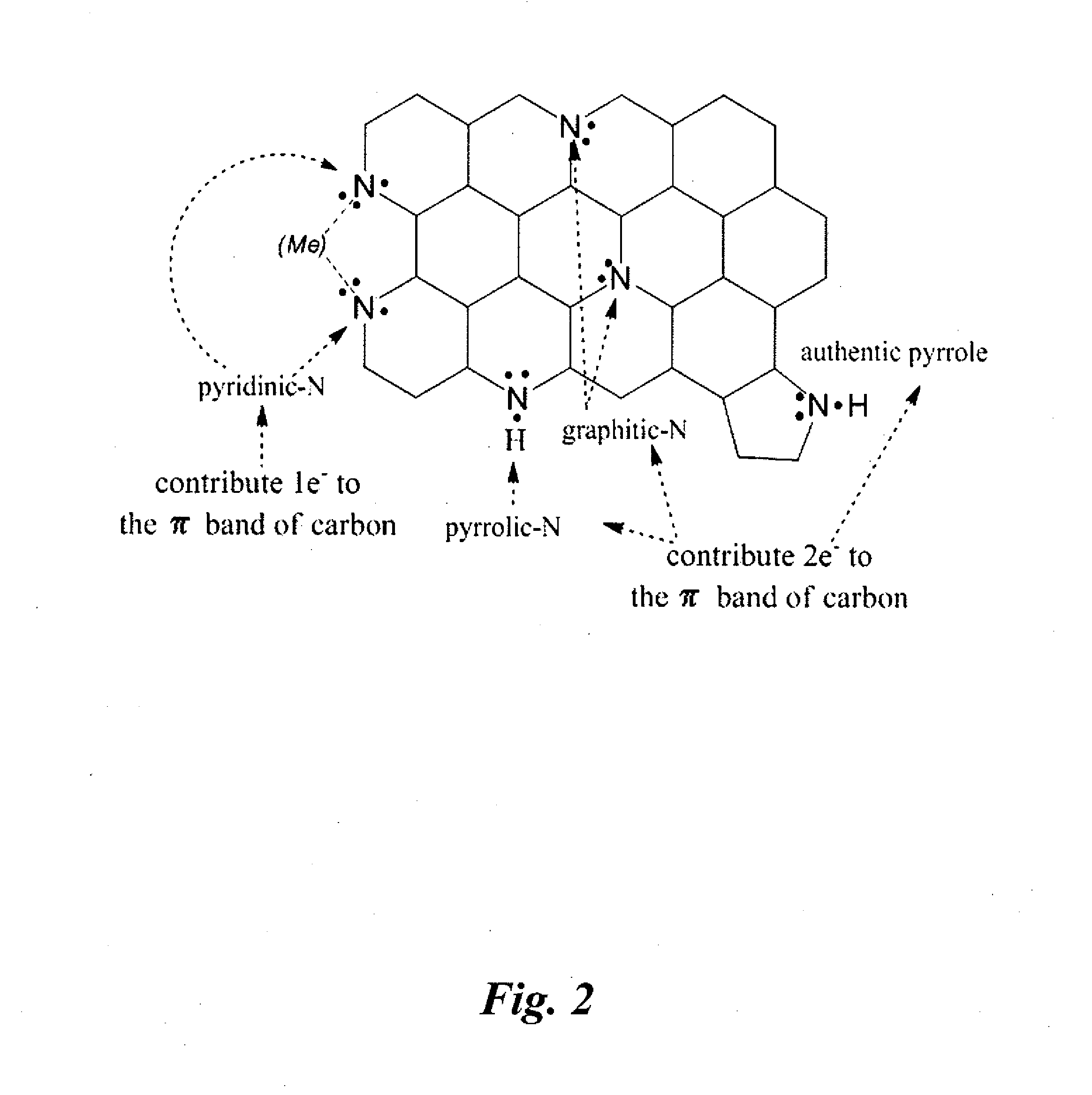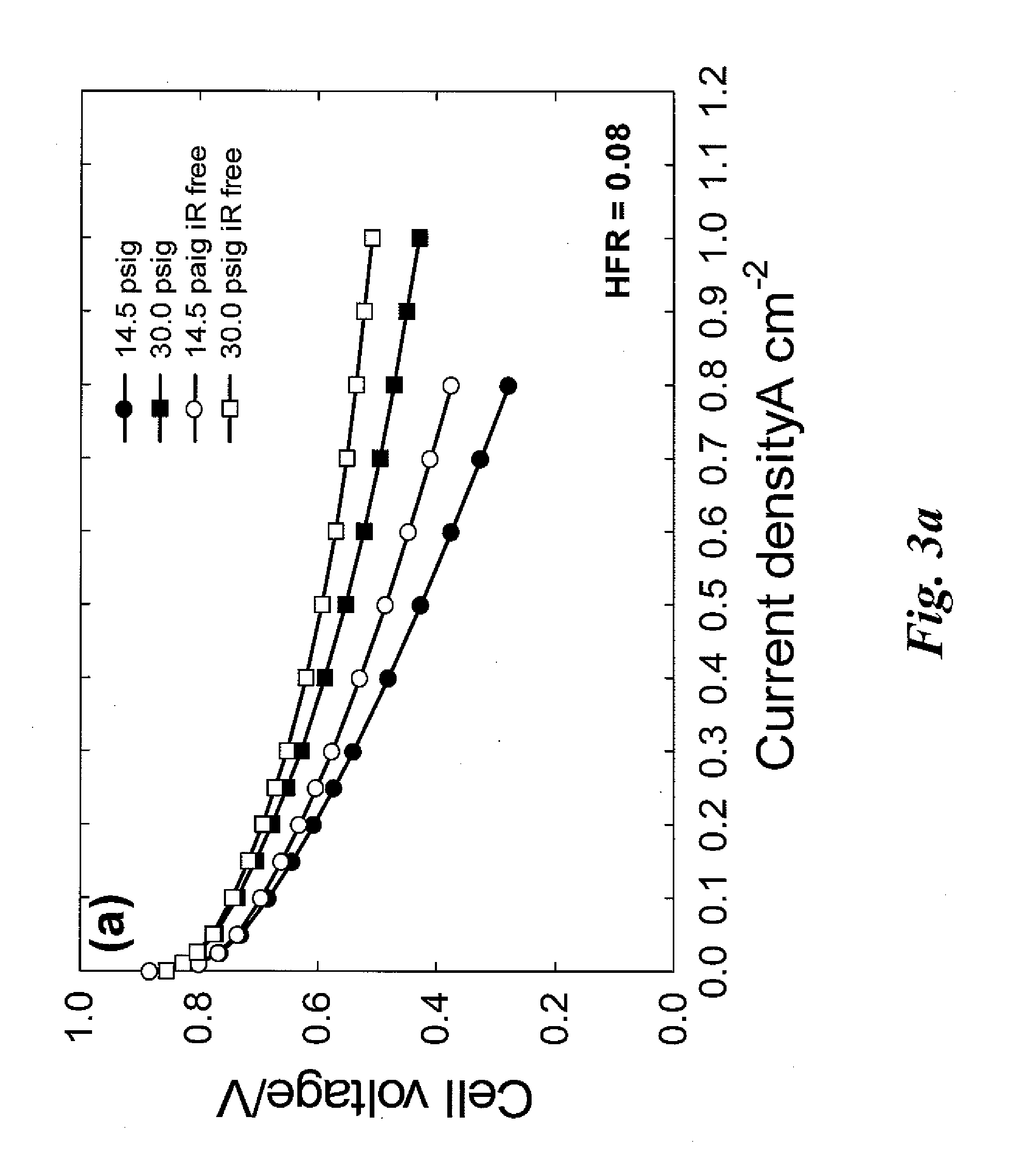Non-precious metal catalysts
a technology of non-precious metals and catalysts, applied in the direction of organic compounds/hydrides/coordination complex catalysts, physical/chemical process catalysts, cell components, etc., can solve the problem of achieve the effect of high overpotential and high cost of precious metals
- Summary
- Abstract
- Description
- Claims
- Application Information
AI Technical Summary
Benefits of technology
Problems solved by technology
Method used
Image
Examples
Embodiment Construction
[0018]Embodiment ORR catalyst compositions were synthesized using a nitrogen source combination of polyaniline and cyanamide. Typically, an oxidant was combined with solution that included both aniline and cyanamide. The oxidant caused polymerization of the aniline to polyaniline. A typical synthesis of an embodiment catalyst involves combining a non-precious metal salt (an iron salt, a cobalt salt, a manganese sale, or a combination of two of these salts, or a combination of all three salts) such as an iron salt (an iron halide salt such as FeBr3 or FeCl3, for example), aniline, and cyanamide with an aqueous solution of hydrochloric acid. Other types of salts that fall within the scope of this invention include metal acetates, metal sulfates, and metal phosphates. The combination of the non-precious metal salt, aniline, cyanamide, and aqueous hydrochloric acid produces a solution. An oxidant is added (ammonium persulfate, for example) to the solution. The oxidant causes polymerizat...
PUM
| Property | Measurement | Unit |
|---|---|---|
| Temperature | aaaaa | aaaaa |
| Temperature | aaaaa | aaaaa |
| Electric potential / voltage | aaaaa | aaaaa |
Abstract
Description
Claims
Application Information
 Login to View More
Login to View More - R&D
- Intellectual Property
- Life Sciences
- Materials
- Tech Scout
- Unparalleled Data Quality
- Higher Quality Content
- 60% Fewer Hallucinations
Browse by: Latest US Patents, China's latest patents, Technical Efficacy Thesaurus, Application Domain, Technology Topic, Popular Technical Reports.
© 2025 PatSnap. All rights reserved.Legal|Privacy policy|Modern Slavery Act Transparency Statement|Sitemap|About US| Contact US: help@patsnap.com



